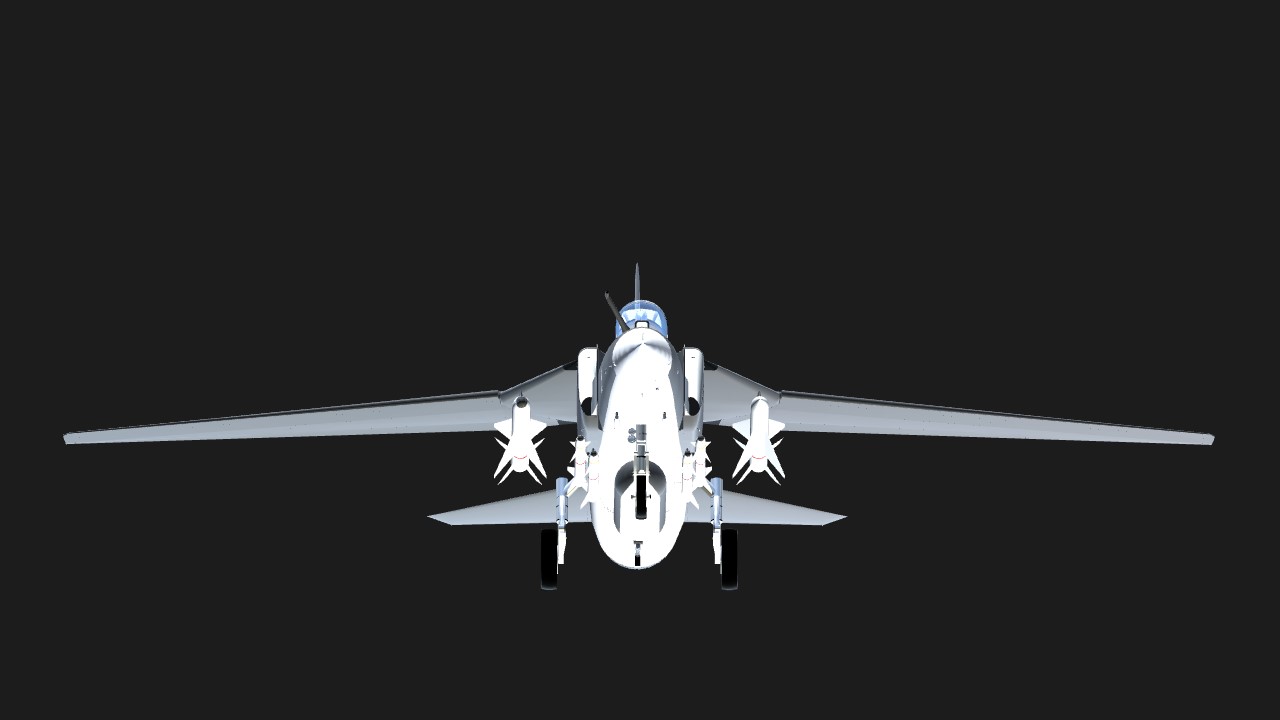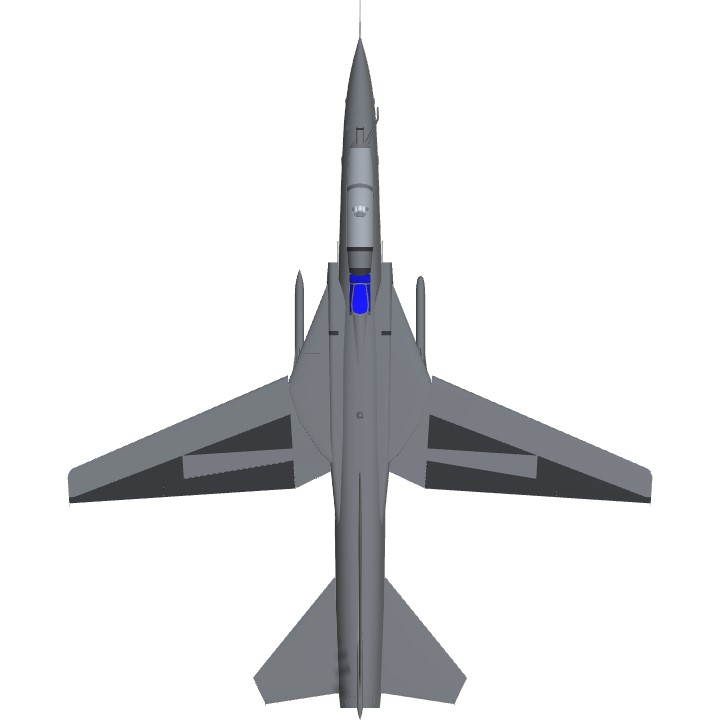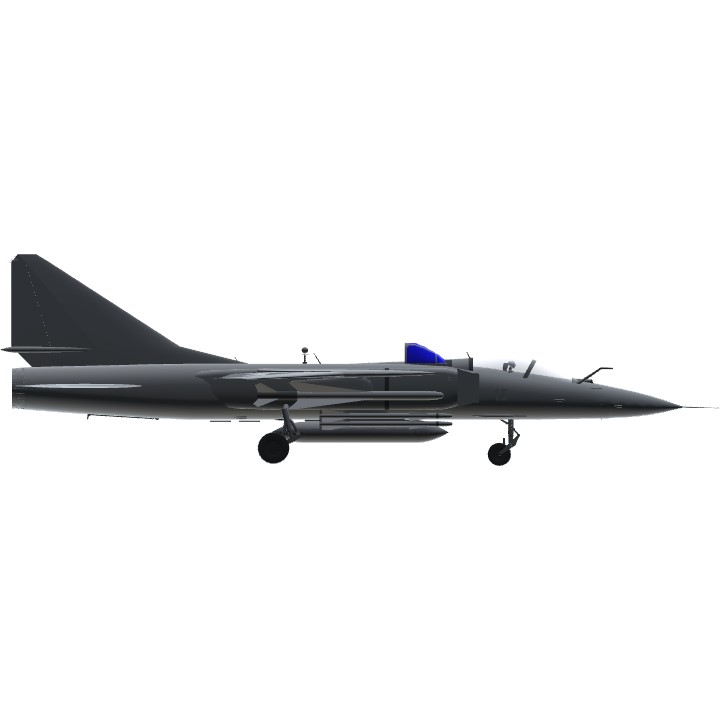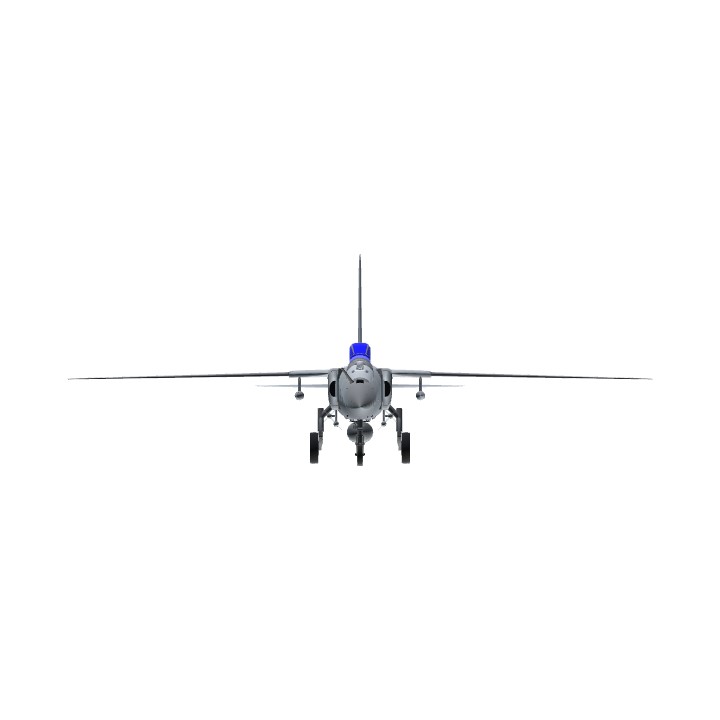Test Flight Documentation Version 0.2.0
Basic Controls
Standard controls:
Pitch up - S
Pitch down - W
Roll left - A
Roll right - D
Yaw left - Q
Yaw right - E
Recommended flight using mouse or joystick.
VTOL up controls the flaps (which will only deploy manually at low speed)
VTOL down controls the manual swing
2 cameras are for the big missiles
One camera is for the dogfight cam (I need to remember the credit the creator)
Activation groups
AG1 - Full wing sweep toggle (will allow the wing to sweep to position three (maximum sweep)
given the aircraft meets the speed criteria)AG2 -AG3 - Tail hook controlAG4 - Jettison centreline tankAG5 - Jettison weaponsAG6 - Landing parachuteAG7 - Airbrakes`AG8 - Landing gear pressure equalizer(do not touch pls)’
Takeoff procedure
Throttle to 80%+ to achieve ideal takeoff speed
Rotation speed is approximately … and takeoff is achieved safely by pulling back to about 80% pitch
Wing sweep mechanism
The pilot is afforded full control of the wing sweep mechanism at subsonic speeds.
Manual wing sweep is controlled by VTOL. No more than 50% VTOL is recommended when flying below supersonic speed (As the aircraft suffers severe agility penalties and becomes difficult to fly)
At mach 0.75 (altitude sensitive) the automatic swing sweep control will activate, setting the wing to its 45 degree supersonic combat position. This will afford the pilot the ability to maintain turns without pulling unsustainable G loads and overstressing the aircraft. Roll has been fixed so that it is manageable at all sweep positions.
Should the pilot wish to forgo agility for speed and acceleration, or require good high altitude interception performance, utilisng AG1 while above mach 0.75 will set the automatic wing control into its fully swept position.
Combat testing
The aircraft is armed with 2 25 mm cannons with … rounds each, 4 short range ir missiles and 1 medium range semi-active radar guided missiles( AAM-2R) and 1 medium range IR guided missile (AAM-2I)
The IR missile locks quickly but will struggle to reach an aircraft flying away from the launching aircraft if fired at its maximum lock distance.
The radar guided missile is intentionally troublesome to use. In spite of its excellent off bore lock and fire capabilities, it cannot be fired if the launching aircraft if pulling greater than 7g. they have a considerable time to cue as well.
The IR seeker is better in sensitivity and is cued using FLIR system. It can lock on much faster but is also limited to 7g on the launching aircraft. It performs slightly better than the radar guided missiles owing to its shorter range but equivalent fuel (and thus more energy to manoeuvre)
The plane excels at boom and zoom combat tactics and BVR engagements with its exceptional speed and acceleration. It is a decent turn fighter, aided by leading edge surfaces that improve its agility. Sustained turn rate is about 15 degrees per second swept wing position 1 and approximately mach 0.75 to 0.85.
Landing procedure
Landing has been significantly improved with a better flight model and more support for the pilot.
Landing is best attempted with 10% throttle and with airbrakes deployed (activate 7)
VTOL up completely. At approx 200mph the flaps will activate (controlled by VTOL) and provide extra lift at low speed).
Touchdown should be at between 180 - 190 mph.
AG6 (not 5!!!!) to deploy drogue chute.
Carrier landings are best attempted with higher speed (At 190 mph) as the hook will do much of the work.
Funky Trees documentation
Mach speed sensor (altitude corrected)
TAS > 0.75*(sqrt(1.4*287.05*((20 - ((Altitude/1000)*6.5)) + 273.15)) - 1)
This equation will approximate what the speed of sound is for a given altitude. It is based on a rule of thumb method involving temperature changes at different altitudes and an assumption of what the ambient temperature in the game is (in lieu of actual temperature readings)
Change log 0.0.1
- Wing sweep to position two is now controlled by a computed mach. At mach 0.75 (for any given altitude) the wing sweep mechanism will activate and set the wings to position 2 for high speed combat performance)
- Added ability to jettison combat armaments on AG5
- Moved the ability to deploy landing chute to AG6
- Fixed traction issue that cause roll to left on takeoff
- Fixed traction issue that could break nose wheel
- Shortened length of Afterburner
- Added functionality to smooth deployment of airbrakes
- Improved nose steering and incorporated reduced turning radius with increasing speed
- Hook deceleration lowered to 40%
- Incorporated AoA based slat control for improved combat performance
Improved roll controls at high wing sweep (not nearly as sensitive and uncontrollable as before) - Implement 2 stage after burner. First stage at between kicks in at 80% throttle and gives a lot of thrust. Second stage kicks in at 100 and will provide an extra boost.
- The intention, in the future, is to simulate engine wear if this mode is used (As the metallurgy in this engine variant could not handle this state for long.
- Improved landing characteristics. Landing with flaps can now be done as low as 156 knots (approximation).
- Slightly improved takeoff run (lessened change of tail-strike by moving rear gear back.
- Significantly reduced drag induced roll (still an issue at high speed)
- Altered flight model. Now exhibits issues with over-g and pitch induced roll when pulling extreme manoeuvres at low speeds
- AG2 reserved for external lights
- Improved Yaw greatly. Yaw now provides a smoother roll movement (or nose attitude alteration). Could still be improved)
Specifications
General Characteristics
- Predecessor naval swing wing
- Created On Windows
- Wingspan 45.5ft (13.9m)
- Length 56.1ft (17.1m)
- Height 16.5ft (5.0m)
- Empty Weight 26,967lbs (12,232kg)
- Loaded Weight 34,283lbs (15,550kg)
Performance
- Power/Weight Ratio 2.884
- Wing Loading 71.3lbs/ft2 (348.0kg/m2)
- Wing Area 481.0ft2 (44.7m2)
- Drag Points 1254
Parts
- Number of Parts 1224
- Control Surfaces 1
- Performance Cost 5,440




